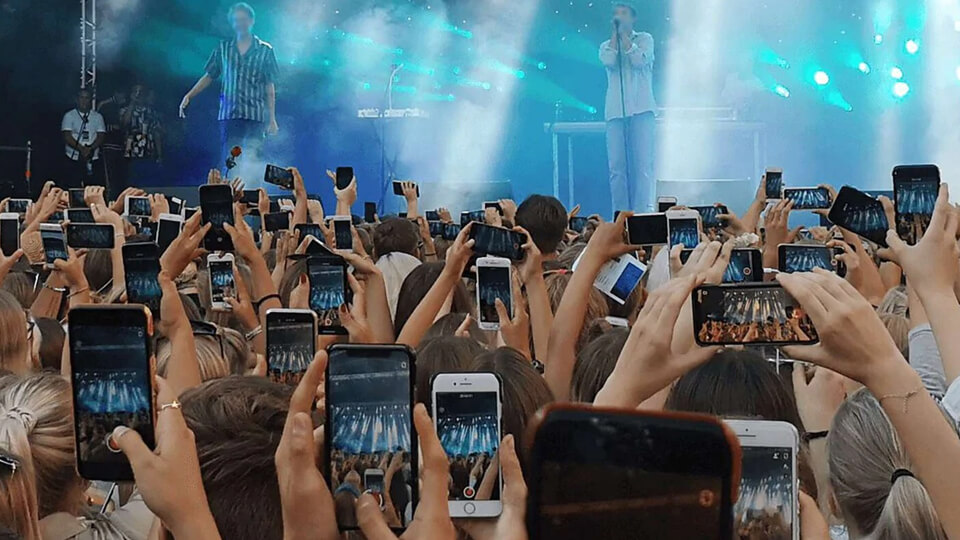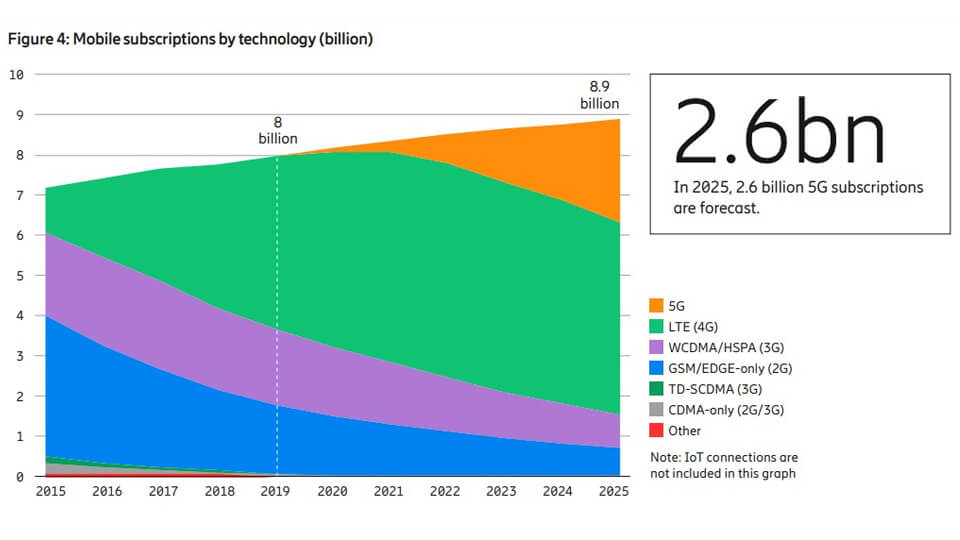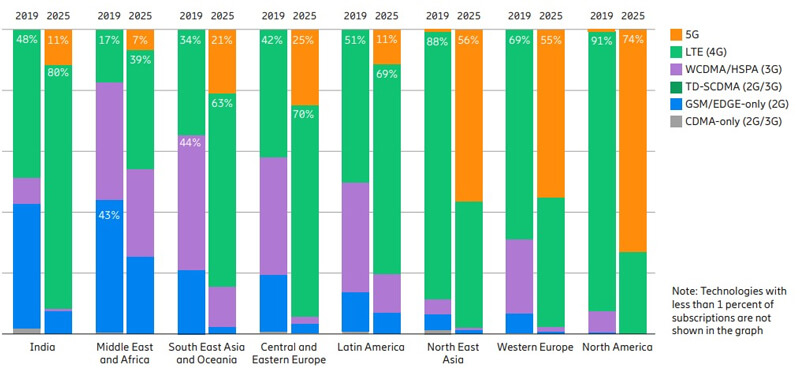
Ericsson Mobility Report: 5G subscriptions to top 2.6 billion by end of 2025
Ericsson (NASDAQ: ERIC) expects the global number of 5G subscriptions to top 2.6 billion within the next six years, driven by sustained momentum and a rapidly developing 5G ecosystem. The forecast is included in the November 2019 edition of the Ericsson Mobility Report, alongside a range of other forecasts with an end-of-2025 timeline and communications service provider insights.
- 5G to cover up to 65 percent of the world’s population by the end of 2025 and handle 45 percent of global mobile data traffic
- Smartphone users to consume a global average of 24 GB per month in 2025 from 7.2 GB currently, as video usage increases and new services become available
- Total number of cellular IoT connections estimated at five billion by the end of 2025, from 1.3 billion by end of 2019

Average monthly data-traffic-per-smartphone is forecast to increase from the current figure of 7.2 GB to 24 GB by the end of 2025, in part driven by new consumer behavior, such as Virtual Reality (VR) streaming. With 7.2 GB per month, one can stream 21 minutes of HD video (1280 x 720) daily, while 24 GB would allow streaming 30 minutes of HD video with an additional six minutes of VR each day.
The report also projects that 5G will cover up to 65 percent of the global population by the end of 2025 and handle 45 percent of global mobile data traffic.
2019 is the year leading communications service providers in Asia, Australia, Europe, the Middle East, and North America switched on their 5G networks. South Korea has already seen a big 5G uptake since its April 2019 launch. More than three million subscriptions were collectively recorded by the country’s service providers by the end of September 2019.
China’s launch of 5G in late October has also led to an update of the estimated 5G subscriptions for the end of 2019, from 10 million to 13 million.
Fredrik Jejdling, Executive Vice President and Head of Networks, Ericsson, says: “It is encouraging to see that 5G now has broad support from almost all device makers. In 2020, 5G-compatible devices will enter the volume market, which will scale up 5G adoption. The question is no longer if, but how quickly we can convert use cases into relevant applications for consumers and enterprises. With 4G remaining a strong connectivity enabler in many parts of the world, modernizing networks is also key to this technological change we’re going through.”
Given its current momentum, 5G subscription uptake is expected to be significantly faster than that of LTE. The most rapid uptake is expected in North America with 74 percent of mobile subscriptions in the region forecast to be 5G by the end of 2025. North East Asia is expected to follow at 56 percent, with Europe at 55 percent.
Other forecasts include: total number of cellular IoT connections now seen at five billion by the end of 2025 from 1.3 billion by the end of 2019 – a compound annual growth rate of 25 percent. NB-IoT and Cat-M technologies are estimated to account for 52 percent of these cellular IoT connections in 2025.
Year-on-year traffic growth for the third quarter of 2019 remained high at 68 percent, driven by the growing number of smartphone subscriptions in India, the increased monthly data traffic per smartphone in China, better device capabilities, an increase in data-intensive content, and more affordable data plans.
Customer insights shared in collaborative feature articles
In a collaborative article written with SK Telecom, the report takes a detailed look at how the South Korean service provider is applying a 5G cluster deployment strategy centered around providing a premium 5G network experience and innovative services to customers in selected geographical locations.
Another article, co-authored with the MTN Group, examines how the South African-based service provider’s focus on user experience and customer loyalty has resulted in measurable network improvements and commercial gains in Rwanda and Ghana.
The report also takes an in-depth look at service providers’ tariff plans, revealing that most service providers who have launched 5G have priced 5G packages about 20 percent higher than their nearest available 4G offering. Lastly, there is an article describing how automotive IoT meets different use case requirements of automotive and transport applications.
Mobile subscriptions by region and technology (percent)

ที่มา : Ericsson Mobility Report November 2019
Ericsson now has more than 75 commercial 5G agreements or contracts with unique communication service providers, of which 23 are live networks.
ABOUT ERICSSON:
Ericsson enables communications service providers to capture the full value of connectivity. The company’s portfolio spans Networks, Digital Services, Managed Services, and Emerging Business and is designed to help our customers go digital, increase efficiency and find new revenue streams. Ericsson’s investments in innovation have delivered the benefits of telephony and mobile broadband to billions of people around the world.






